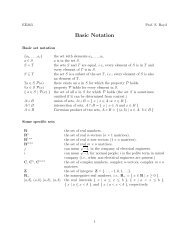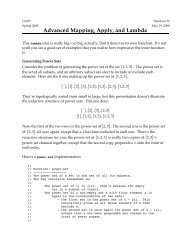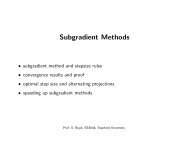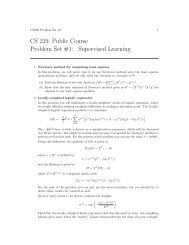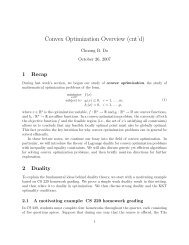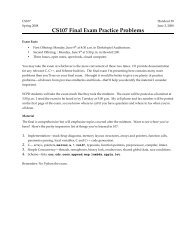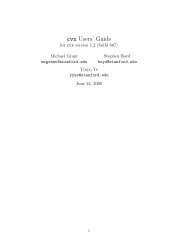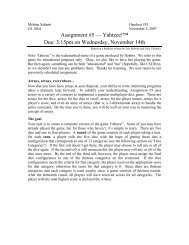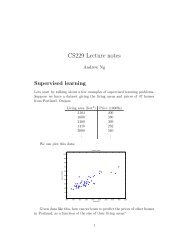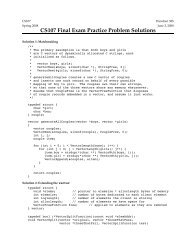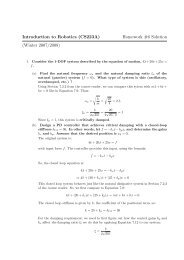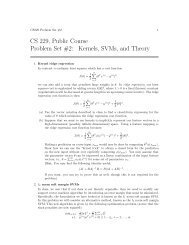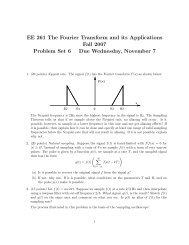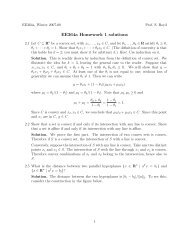Scheme: Functions As Data
Scheme: Functions As Data
Scheme: Functions As Data
Create successful ePaper yourself
Turn your PDF publications into a flip-book with our unique Google optimized e-Paper software.
list isn’t actually changed. It just determines the length and contents of the one being<br />
generated.)<br />
Apply<br />
The <strong>Scheme</strong> language provides another built-in called apply, which takes an n-ary<br />
function and a list of n expressions, effectively conses the function onto the front of the<br />
argument list, and then evaluates it. Here’s a trivial example:<br />
8<br />
#|kawa:2|# (apply + '(1 2 3 4))<br />
10<br />
#|kawa:3|# (sqrt (apply + (map * '(3 4) '(3 4))))<br />
5.0<br />
See what I mean when apply kinda, sorta conses the + onto the front of '(1 2 3 4) to get<br />
(+ 1 2 3 4), and then evaluates it as if the user actually typed (+ 1 2 3 4). The sqrt<br />
example is yet another way to illustrate that a 3-4-5 triangle has a 90 degree angle in<br />
there somewhere.<br />
Now, would you type in (apply + '(1 2 3 4)) to add the first four integers? Yes, but<br />
only if you’re showing off and/or the type of person who regularly recites π out to 430<br />
decimal places for fun. But in some situations, apply is really the best function to use.<br />
Here’s a small but meaningful example:<br />
;;<br />
;; Function: average<br />
;; -----------------<br />
;; Quick, clean way to compute the average of a set of numbers without<br />
;; using any exposed car-cdr recursion. This is the canonical example<br />
;; illustrating why apply belongs in a functional language.<br />
;;<br />
(define (average num-list)<br />
(/ (apply + num-list) (length num-list)))<br />
#|kawa:2|# (average '(3 5 9 11 3))<br />
31/5<br />
#|kawa:3|# (average '(99998 99999 100000 100001 100002))<br />
100000<br />
#|kawa:4|# (average '(3.4 8.3 2.7 6.6))<br />
5.25<br />
Without apply, we’d have to write a function to crawl down the list of numbers to<br />
produce a sum, all in spite of the fact that + already does something very, very similar.<br />
Here’s a real example: Let’s compute the depth of a list, where the depth of the list is<br />
equal to the largest number of open left parentheses. The problem statement views a list<br />
as an ordered tree, where nested lists are viewed as sub-trees. Where there’s a tree,<br />
there’s a clear metaphor for depth. Let’s listen in to see what depth has to say:



